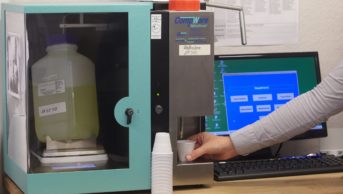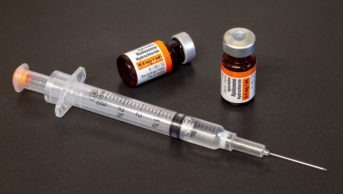
Debi Bhattacharya
Many prescribers are concerned about starting discussions with patients on lowering their use of opioids, a medicines optimisation research team from the School of Pharmacy at the University of East Anglia (UEA) has found.
The team studied existing research on opioid tapering methods, as part of developing an approach to help tackle chronic opioid use in non-cancer pain. They surveyed primary care organisations to understand why interventions worked in practice.
Debi Bhattacharya, a senior lecturer in pharmacy practice at UEA and lead researcher on the team, said they found that many prescribers were concerned about initiating discussions with patients around opioid tapering.
“They were nervous about opening a ‘can of worms’ that they then might not be able to deal with because they don’t have the training,” she said.
“Without sufficient training, even at a low level, they did not have the confidence to initiate that discussion.”
The UEA team identified seven main features that should be included in all opioid tapering, or deprescribing, interventions. The first, and overriding element, of the seven areas in the toolkit was the need for a clear expectation that opioid deprescribing is the responsibility of prescribers.
“We’re not prescriptive because every organisation is slightly different, but that may take the form of a [financial] incentive scheme [run by the clinical commissioning group (CCG)],” Bhattacharya said.
“It is [then] very clear to the prescriber that their organisation wants them to do this.”
Three of the seven features were to ensure prescribers have access to information about the consequences of excess opioid use; that prescribers have access to the relevant guidelines to provide them with the knowledge and skills needed to approach tapering in the right way and that prescribers have the necessary training to initiate discussions with patients and navigate the patient pathway.
The aim, Bhattacharya said, was to make sure that prescribers feel equipped to “open that ‘can of worms’” and to avoid sending patients to pain clinics by default.
“We’re not advocating that all [prescribers] have [cognitive behaviour therapy] training — we have given some examples of training that are available online to give prescribers the confidence that they can have that discussion with the patient if they’re experiencing psychological problems with tapering.
“For the vast majority of patients who will not have severe psychological problems, this low level of training will allow prescribers to support them.”
For the remaining three features, the toolkit highlights the importance of all members of the healthcare team having a consistent approach and in providing comprehensive education for patients so that they have the knowledge to enable them to be proactive in their tapering.
Finally it states that there needs to be a pathway for patient management including access to appropriate levels of psychological and physical support.
“Opioid tapering programmes will work if it’s clear that opioid tapering is a priority for all prescribers and for the organisation, and if the people who has been asked to initiate these discussions have the knowledge and skills to do it, or the appropriate support network to signpost a patient to,” said Bhattacharya.
She explained that while a number of areas are already meeting some of the seven requirements, she hoped that the existence of the toolkit would help CCGs to understand the other essential elements of opioid tapering.
“Historically there has tended to be a huge focus on education — lots of leaflets and spending money on talking at people — and it’s clear that that is not sufficient.
“Telling prescribers that they need to do this is insufficient. [CCGs] need to put their money where their mouth is, which is where incentive schemes come in, and then they need to give them the sufficient skills so they have the confidence to do [opioid tapering].
“I hope CCGs will look at this toolkit and be very clear that all seven components need to be in place to deliver an effective intervention, and then think about how they can restructure their existing infrastructure and resources to deliver all seven components.”
The project was funded by the National Institute of Health Research Collaboration for Leadership in Applied Health Research & Care. The toolkit for tackling chronic opioid use in non-cancer pain is available to access on the UEA website.


